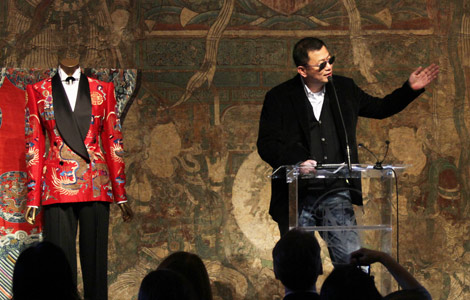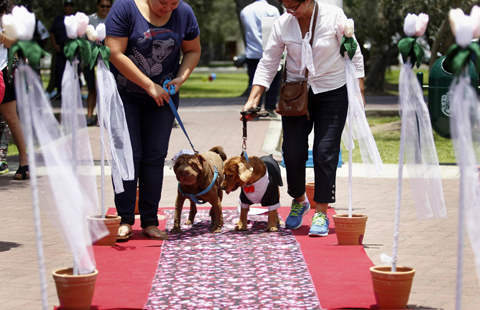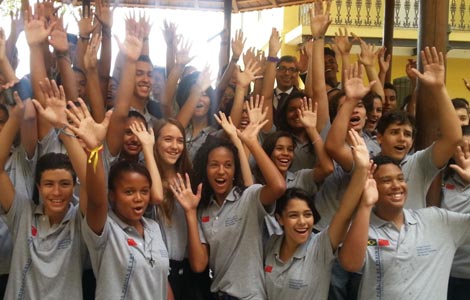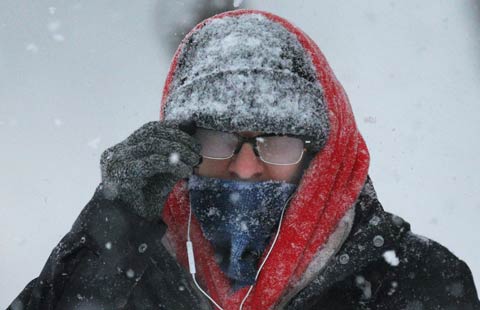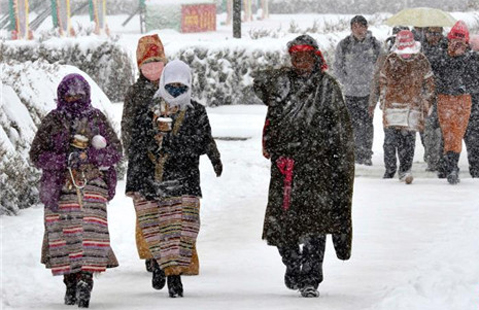Chinese communities join in on the fun
Updated: 2015-02-17 11:12
By Paul Welitzkin in New York(China Daily USA)
|
||||||||
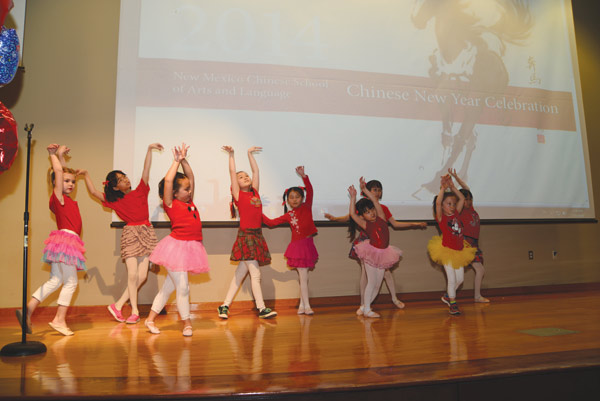 |
|
Young dancers from the New Mexico Chinese School of Arts and Language perform at last year's New Year celebration in Albuquerque. Provided to China Daily |
Thursday marks the arrival of the Chinese Lunar New Year, and although thousands of miles and in many cases several generations away from celebrations in the mainland, Chinese communities across the United States also will gather to mark the holiday.
Major celebrations will take place in New York City and San Francisco, but also in cities that may be little known for their Chinese communities. Here is a look at three such cities and their New Year's events.
Albuquerque, New Mexico
Chinese first came to New Mexico in the 1880s, according to Changjian Feng, a professor in the pharmaceutical sciences department at the University of New Mexico in Albuquerque.
"Chinese Americans would find their way to New Mexico on the railroads and as miners. The dangerous, Western leg of the transcontinental railroad was built by Chinese laborers. When the railroad came to Albuquerque in the late 1800s, Chinese immigrants and laborers came with it," said Feng.
The Chinese community in Albuquerque, the state's largest city, numbers about 3,000. In 2013, the US Census Bureau estimated the state population at 2.08 million, with approximately 1.6 percent of Asian descent.
"We have a number of professionals who work at the university like me," said Feng. "We also have scientists who work at the Sandia National Laboratories (an engineering and science laboratory operated by Sandia Corporation, a Lockheed Martin Company, for the US Department of Energy's National Nuclear Security Administration). We also are represented by physicians in private practice and those who practice Traditional Chinese Medicine."
Feng also serves as principal of the New Mexico Chinese School of Arts and Language. The Albuquerque school is open to all members of the community and provides classes for beginners and advanced instruction for those with basic Mandarin skills. It also offers art and music classes.
The school's New Year's celebration will be held on Feb 22. Feng anticipates 200 to 300 people will attend. Also on Feb 22, the University of New Mexico's Chinese Spring Festival Gala will be held on the campus. It is sponsored by the school's Chinese Students and Scholars Association and co-sponsored by the Consulate General office in Los Angeles and the university's Graduate and Professional Student Association.
Columbus, Ohio
The Chinese population in Columbus is about 20,000, according to Minru Li, assistant director of National East Asian Languages Resource Center at Ohio State University. The school has over 3,000 international students with more than half from China.
"The first official record of arrival of natives from China in Ohio was in 1843," Li said. "The first Chinese in Columbus came in 1893 and the first Chinese laundry opened in 1898."
Li said the Chinese community is composed mainly of middle-class professionals who work at large companies, such as Columbus-based Nationwide Insurance and at Chemical Abstracts, a scientific organization.
On Feb 21, the Chinese Students and Scholars Association (CSSA) at OSU will sponsor a New Year's celebration. On Feb 22, the Ohio Chinese School in Worthington, a Columbus suburb, will hold a New Year's event. And on Feb 23 the Chinese Culture Club at OSU will hold a celebration. Members of the club are Americans studying Chinese language, culture and history. "Quite a few of the members have no Asian or Chinese heritage. Many members are second and third generation Chinese," said Karen Mancl, a professor and adviser to the group.
Nashville, Tennessee
Chinese first arrived in Tennessee in the late 19th century, according to Dr Ming Wang, a physician, president of the Tennessee Chinese Chamber of Commerce and honorary chairman of the Tennessee American-Chinese Chamber of Commerce."My understanding is that after the Civil War ended in 1865; the south was very strong in agriculture. The Chinese were brought in to labor on cotton farms," he said.
Wang said the state's Chinese community now numbers about 50,000, primarily in Knoxville, home of the University of Tennessee, Memphis and Nashville.
"The first wave of modern immigrants to Tennessee was employed on farms or operated restaurants and retail shops and was mostly from Taiwan," Wang said. The second wave which began in the 1970s, were more professionally focused including physicians (like Wang) and research scientists at colleges, including Vanderbilt University in Nashville and the University of Tennessee.
"The Chinese community in Nashville and in Tennessee is a lot like the Chinese communities in San Francisco or New York City 50 years ago," said Wang. "Most of the Chinese Americans here are still engaged in professions traditionally represented by Chinese Americans such as being restaurant owners and university researchers. The challenge faced by the Chinese Americans here in the heartland of America today is how to step out of the comfort zone of our own ethnicity and integrate more effectively and in larger numbers into American mainstream activities."
Two major Chinese New Year events will be held in Nashville. On Feb. 21, the Asian American Student Association will present the annual Asian New Year Festival, a showcase of dances and performances spanning 11 countries across Asia on the Vanderbilt campus. On Feb 22, the Greater Nashville Chinese Association, which consists of mostly business people, will hold a New Year's celebration focused on the community.
paulwelitzkin@chinadailyusa.com
Most Viewed
Editor's Picks

|

|

|

|

|

|
Today's Top News
Metropolitan Museum of Art to focus on China
Reward raised for clues to Chinese family's slaying
New visa policy draws more Chinese tourists
Portland State CI ready for Spring Festival
Students debate the environment
Fireworks on Hudson tonight to usher in Chinese New Year
UN Security Council slams IS murders of 21 Egyptians
Austria on high alert following Denmark terror attacks
US Weekly

|

|

